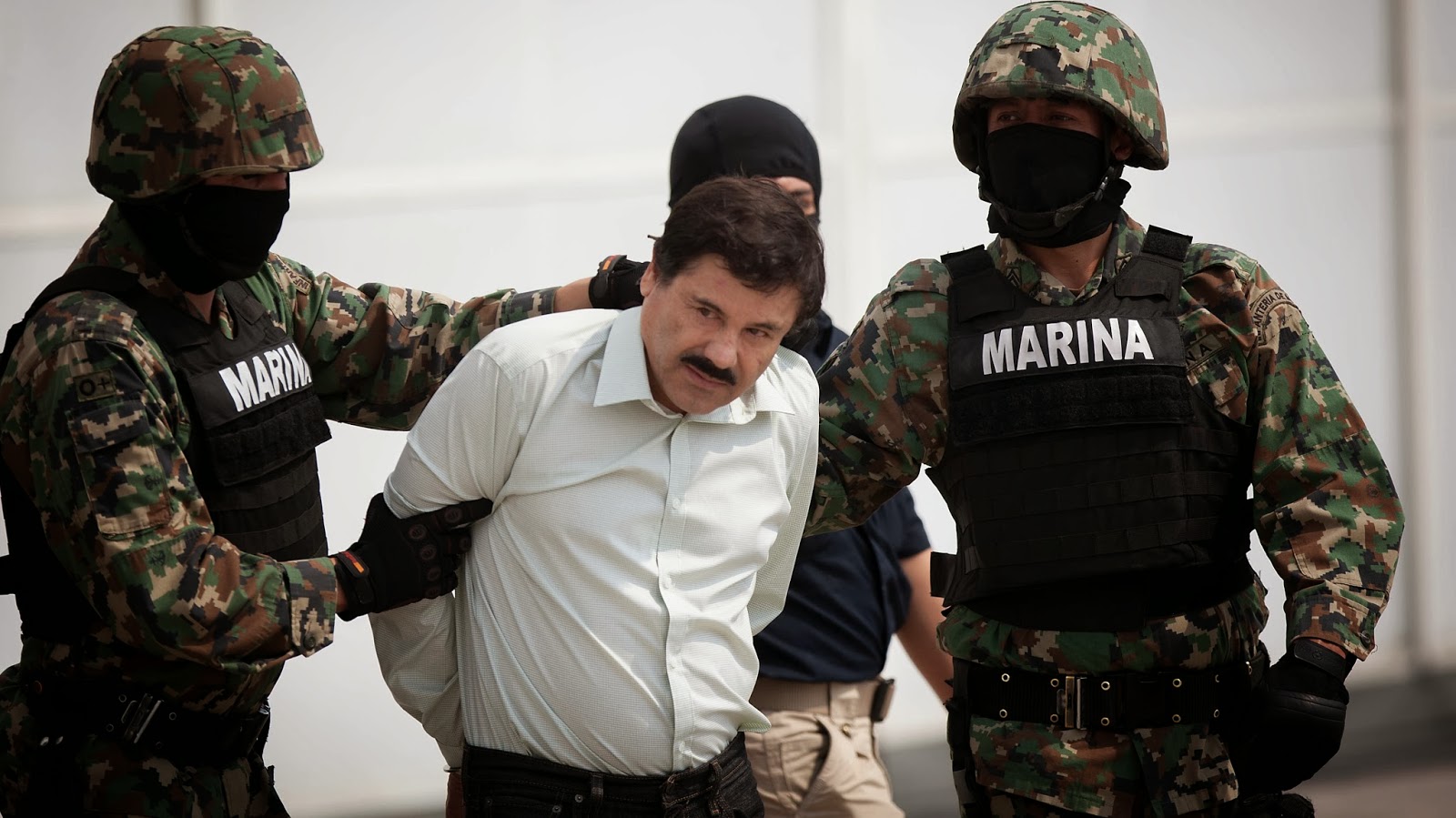Mexican Kingpin El Chapo Guzman Hid In Secret Tunnels And Sewers Before Being Captured
The Mexican government confirmed Saturday that Mexican drug lord
Joaquín “El Chapo” Guzmán was detained in Sinaloa, his home state on
Mexico’s Pacific coast. “I acknowledge the work of the Mexican security
institutions in achieving the arrest of Joaquín Guzmán Loera in
Mazatlán,” Mexican President Enrique Peña Nieto wrote in his Twitter
account.
Up until Saturday, no action by the Mexican or U.S. governments
against Guzmán, including targeting his multimillion dollar money
laundering operation to squeeze his finances, had been successful. His
success as the U.S.’s #1 supplier of illegal drugs –as the head of the
Sinaloa cartel — is attributed to his extraordinary entrepreneurial
skills and his immense power to bribe corrupt Mexican officials.
A 2012 declassified report by the Institute of Defense Analysis
(IDA), described the Sinaloa cartel as a powerful criminal group capable
of laundering billions of dollars through a vast network of
associations and front companies protected by corrupt government
officials, security forces and private industry.
In a press conference in Mexico City Saturday afternoon,
parts of which were shown on CNN in the U.S., El Chapo was shown neatly
shaved, wearing black denim pants and a light shirt, while being
escorted by Mexican Marines. This is the first time he was seen in
public in over a decade.
Mexico’s Attorney General, Jesús Murillo Karam, said Guzmán was
captured without a single shot fired in a hotel in the port of Mazatlán,
a favorite tourist destination for Americans. Without elaborating,
Murillo confirmed that U.S. law-enforcement agencies assisted in the
operation.
The Mexican Attorney General reported that the operation lasted
around a month and was triggered by intelligence that revealed that the
kingpin was living in seven different houses which were connected by
secret tunnels and sewers. In recent days, the Mexican press published
pictures of Mexican Marines lifting sewer covers to look for El Chapo.
So far, authorities have seized 97 long arms, 36 handguns, two grenade
launchers, one rocket launcher, 43 vehicles (19 of them armored), as
well as 16 houses and four ranches.
In Washington, Attorney General Eric Holder called Guzman’s detention
“a landmark achievement.” Holder said that the criminal activity Guzmán
allegedly directed contributed to the death and destruction of millions
of lives across the globe through drug addiction, violence, and
corruption. He saluted the Mexican government and said he “looks forward
to ongoing cooperation, and future successes.”
Guzmán faces multiple federal drug trafficking indictments in several
states in the U.S. It is not clear if the U.S. government will ask for
his extradition. In 2001, when Guzmán escaped from a Mexican
high-security prison, the drug kingpin was in the process of being
extradited to the U.S. El Chapo has escaped twice before from Mexican
prisons. According to The Chicago Sun Times, Jack Riley, head of DEA in
Chicago, said his office will ask for El Chapo to be extradited to face
criminal charges in Illinois. Last year, El Chapo was declared Chicago’s
Public Enemy #1.
The arrest was first leaked by an unidentified senior American law-enforcement official to the AP and The New York Times. The Mexican
Attorney General explained that the official announcement was delayed
because they wanted to confirm his identity. A forensic exam made it
“100 %” certain the man was Guzmán, Murillo told the press.
El Chapo’s ability to elude law enforcement fueled a wide variety of
speculation concerning his possible hideouts. In 2013, Guzmán was
falsely declared dead, rumored to be hiding in Honduras, and allegedly
admitted to a private hospital after suffering a heart attack.
Throughout 2013, I maintained that Guzmán was most likely hiding in
Sinaloa, where he is seen as a folk hero in many communities and
protected by Mexican government and law-enforcement officials.
In the past decade, El Chapo not only eluded an international
man-hunt, but also managed to geographically expand his criminal empire,
which now stretches throughout the Americas, Europe, Australia and more
recently Asia. It remains to be seen if his arrest has a positive
impact on decreasing the flow of illegal drugs to the U.S. and the level
of violence inside Mexico. His status as the world’s most powerful and
elusive drug lord, made him an almost mythical figure.
In 2013, El Chapo was dropped from Forbes World’s Billionaire list
due to the complexity of assessing his wealth and his unknown
whereabouts. Since 2009, he has been included in Forbes’ World’s Most Powerful People list. In 2013 he ranked 67th out of 72.

Comments
Post a Comment